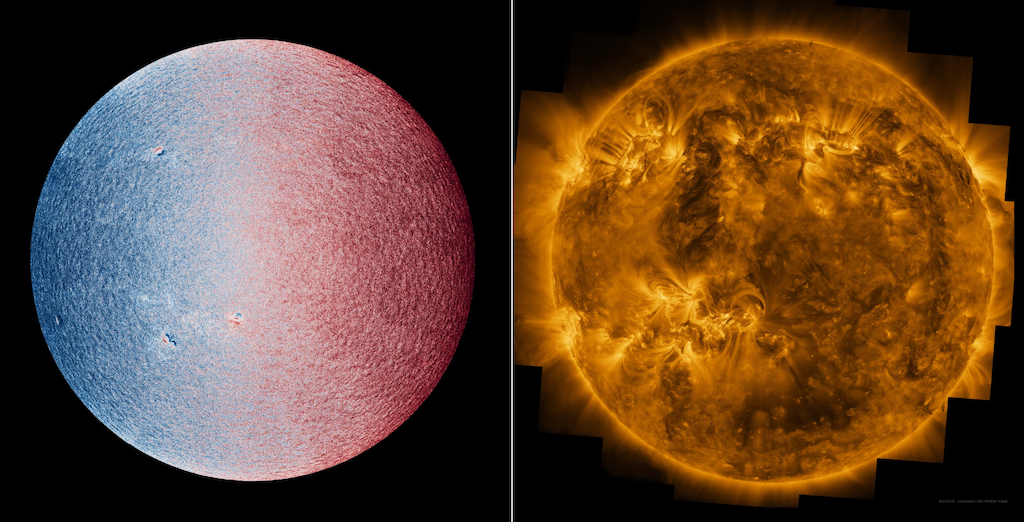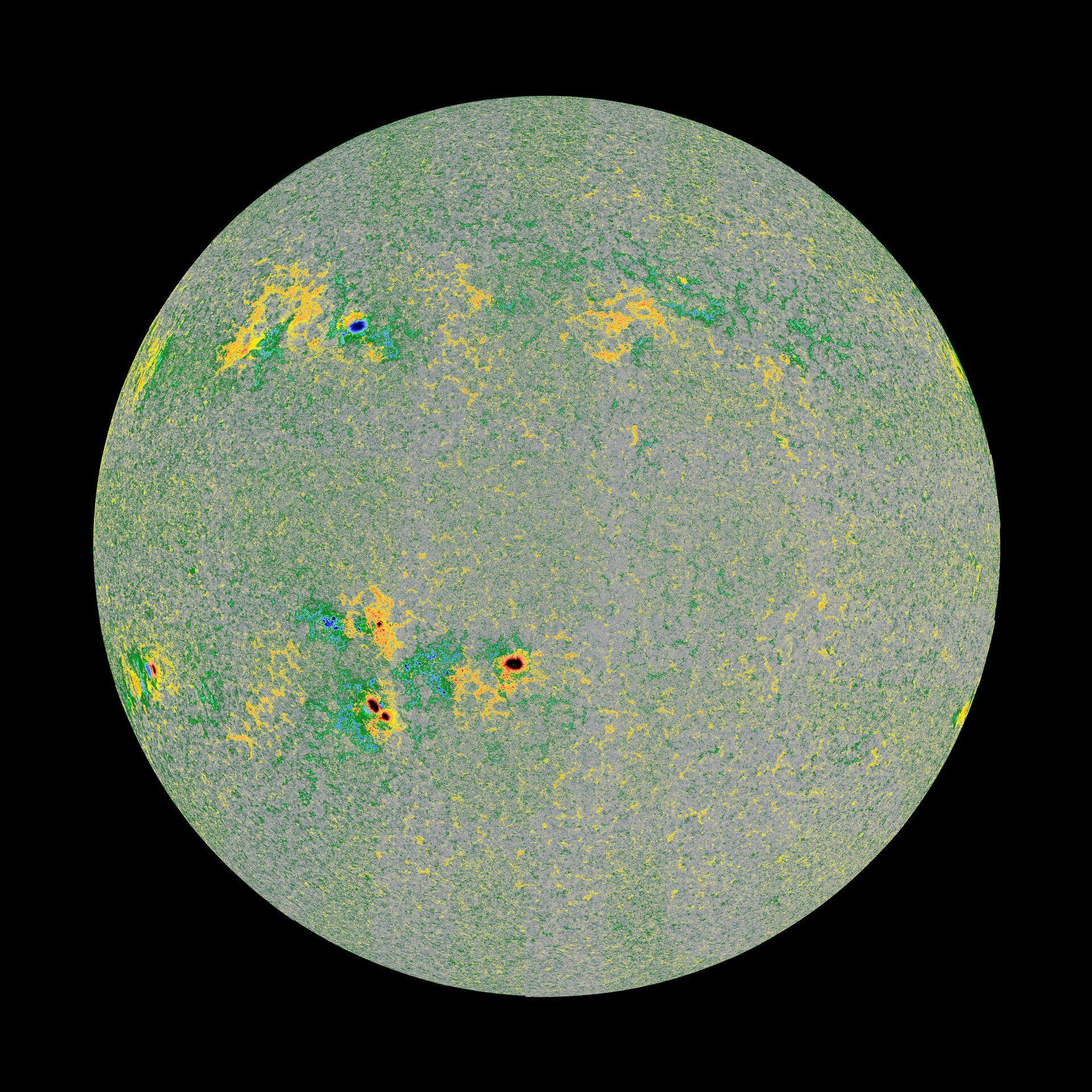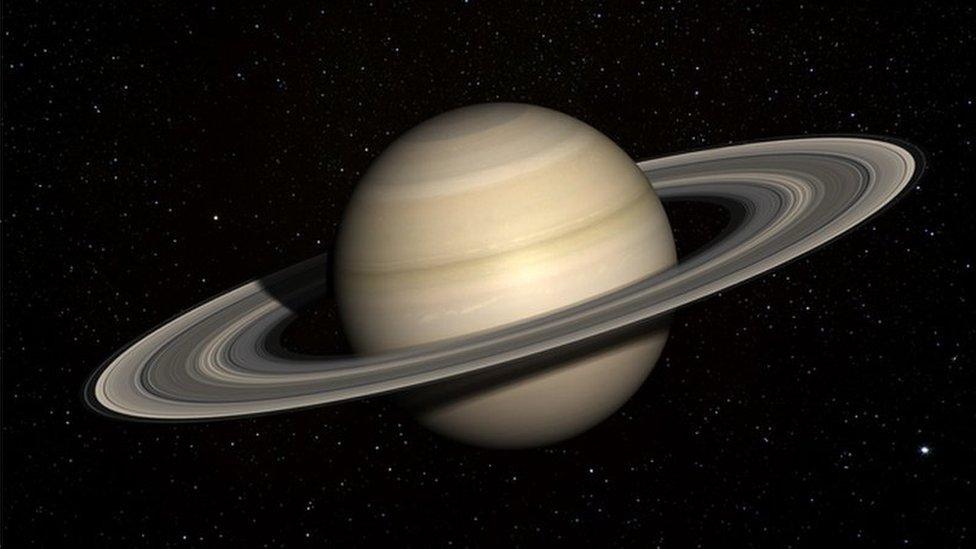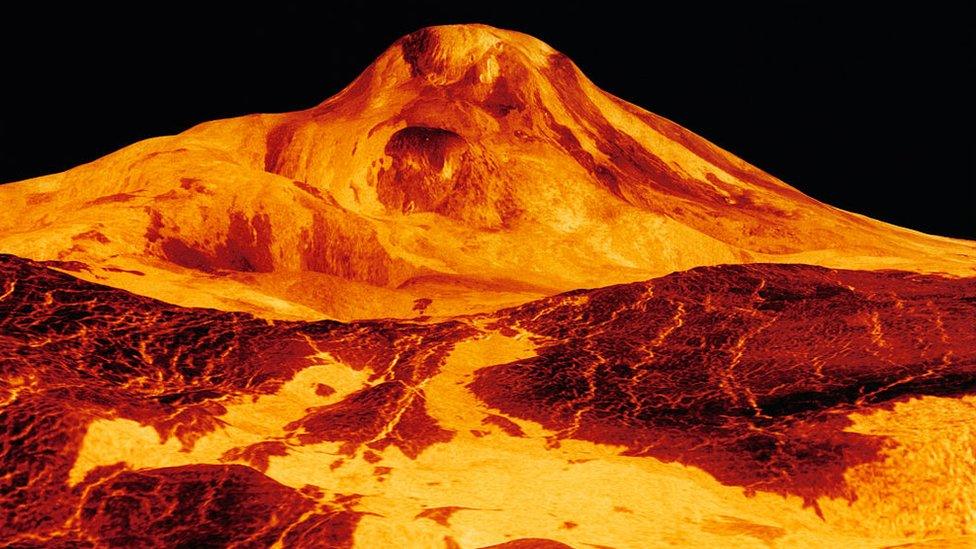The Sun's 'many faces' revealed in new images

On the left is a map of the movement of the Sun's surface, on the right is the Sun in ultraviolet light - Wow!
- Published
It's big, it's very hot and it is essential to life on Earth.
Now the clearest view of the Sun's surface has been revealed.
The pictures have been captured by the Solar Orbiter space mission that's led by the European Space Agency (ESA).
It's the most advanced technology to ever orbit the star, and has been sending back information since 2020.
These images were taken on 22 March 2023 and show things the Sun's "messy" magnetic field and a charged gas called plasma that moves on the surface.
More 'out of this world' stories
Scientists shine light on the Sun's magnetic field
- Published23 May 2024
Did you see the Northern Lights and what causes them?
- Published11 May 2024
Nasa solar probe 'touches' the Sun for the first time
- Published16 December 2021

Here we can see a map of the Sun's magnetic field
How were the images of the Sun taken?
The Sun is watched using six instruments, including the Polarimetric and Helioseismic Imager (PHI) and the Extreme Ultraviolet Imager (EUI).
These take pictures that peel away layers and "reveal its many faces", according to the ESA.
The PHI takes images in visible light and measures how fast and the direction where parts of the surface are moving.
These measurements can be compared to the Sun's glowing outer atmosphere, called the corona. Pictures of this have been captured by the EUI.
The images were taken when the Solar Orbiter was less than 74 million kilometres from the Sun.
They were then stitched together to make a big collage picture, or a mosaic.
The PHI and the EUI mosaic are made of 25 images each, taken over more than four hours.
The team now wants to release these images twice a year - what a bright idea!

The dark regions on this picture are sunspots
What do the Sun images show?
The images reveal the Sun's surface of glowing hot plasma.
Almost all of its radiation is released from this plasma layer, which has a temperature between 4500 and 6000 °C.
Now that's hot!
Due to this movement, the Sun's surface looks grainy.
The sunspots can be seen looking like dark spots, or holes. They are colder than their surroundings, so give off less light.
Daniel Müller, Solar Orbiter's Project Scientist said: "The Sun's magnetic field is key to understanding the dynamic nature of our home star from the smallest to the largest scales.
"These new high-resolution maps from Solar Orbiter's PHI instrument show the beauty of the Sun's surface magnetic field and flows in great detail."
More amazing space stories
- Published9 April 2024

- Published21 March

- Published29 May 2023

